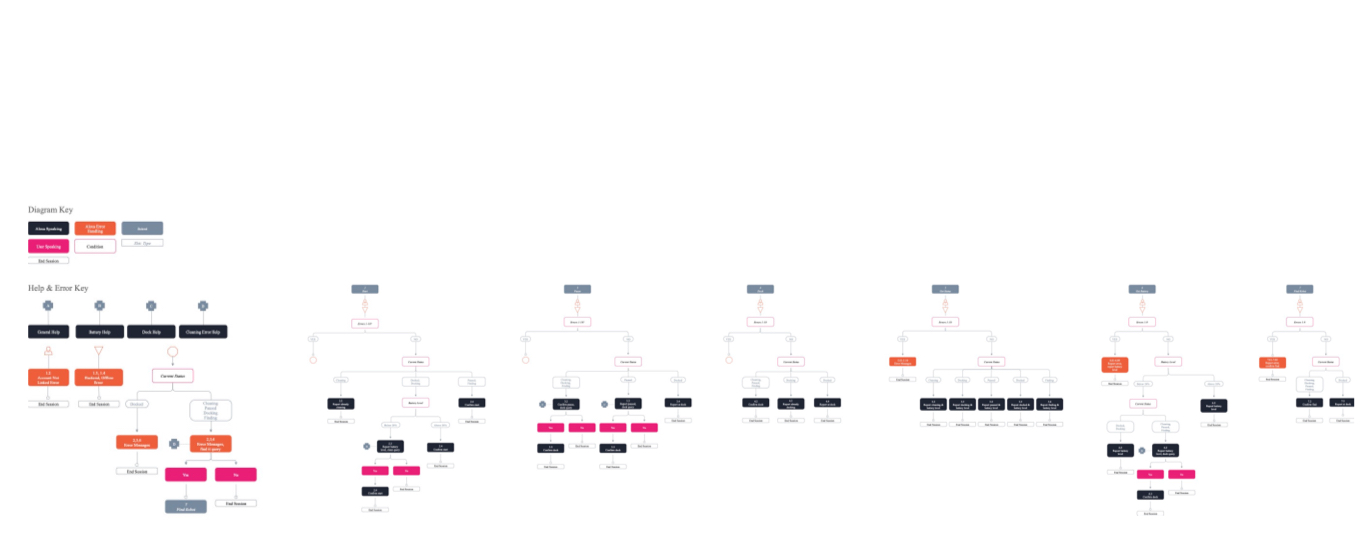Shark Ninja Robot Vacuum VUI
Team: 2 UX/UI designers, a voice developer, an app team
Role: VUI Designer
Timeline: 3 months, Winter 2018
Scale: Product released nationwide
Technology: Alexa, Google Assistant, Sketch, Invision
Problem: A robot vacuum moves independently and makes a good candidate for a voice-skill usecase. My agency, Vectorform, was tasked with developing the app, voice skill, and hardware connection for a connected robot vacuum.
Process
- Worked with engineers and the app team to sketch out usecases that would be useful, possible, and seamless across voice and app.
- Did landscape analysis, conversational research, and branding workshops to understand the tone we wanted to capture in the robot’s “voice”
- Created 2 voice user interface diagrams, one for Alexa, one for Google Assistant, to map out the skill, including a welcome message that describes features, error scenarios and solutions, and error prevention opportunities and delivered to developers.
- Wrote copy (what the voice assistant actually says) based on research, voice assistant platform standards, app interface copy, and brand identity.
- Onboarded two UX designers to the voice design process
Outcome: Shark/Ninja became one of the first voice-connected robot vacuums in the market. The product carries a 5 star rating on amazon.

